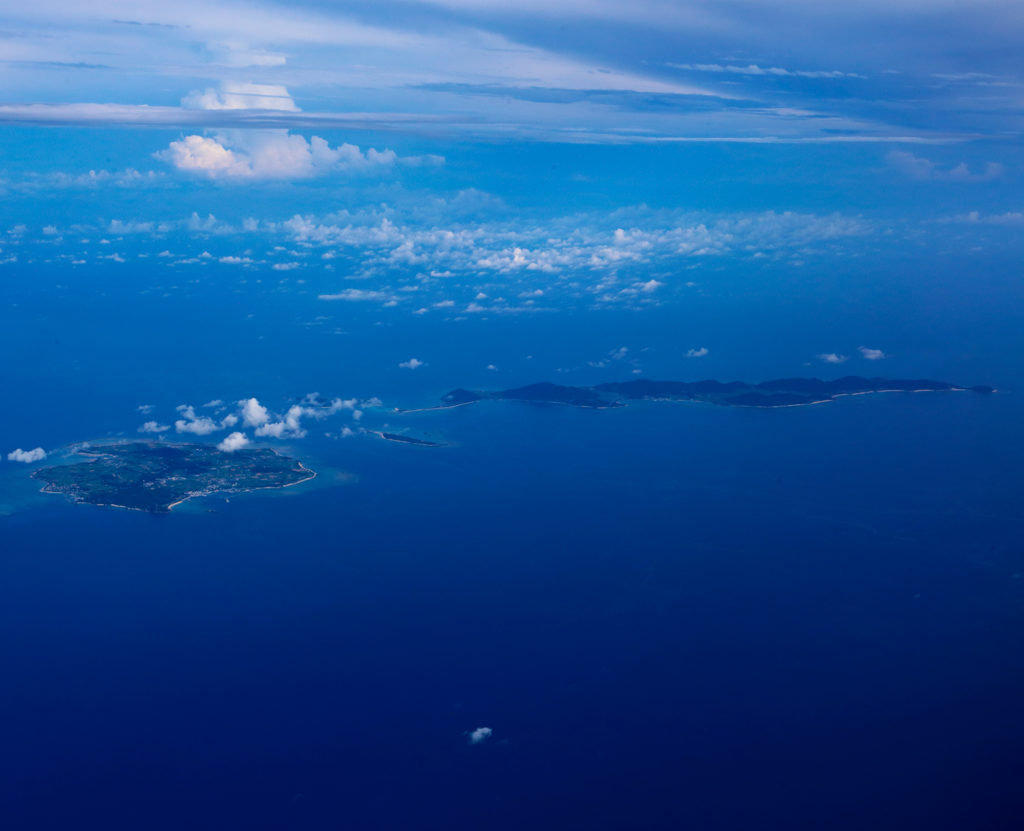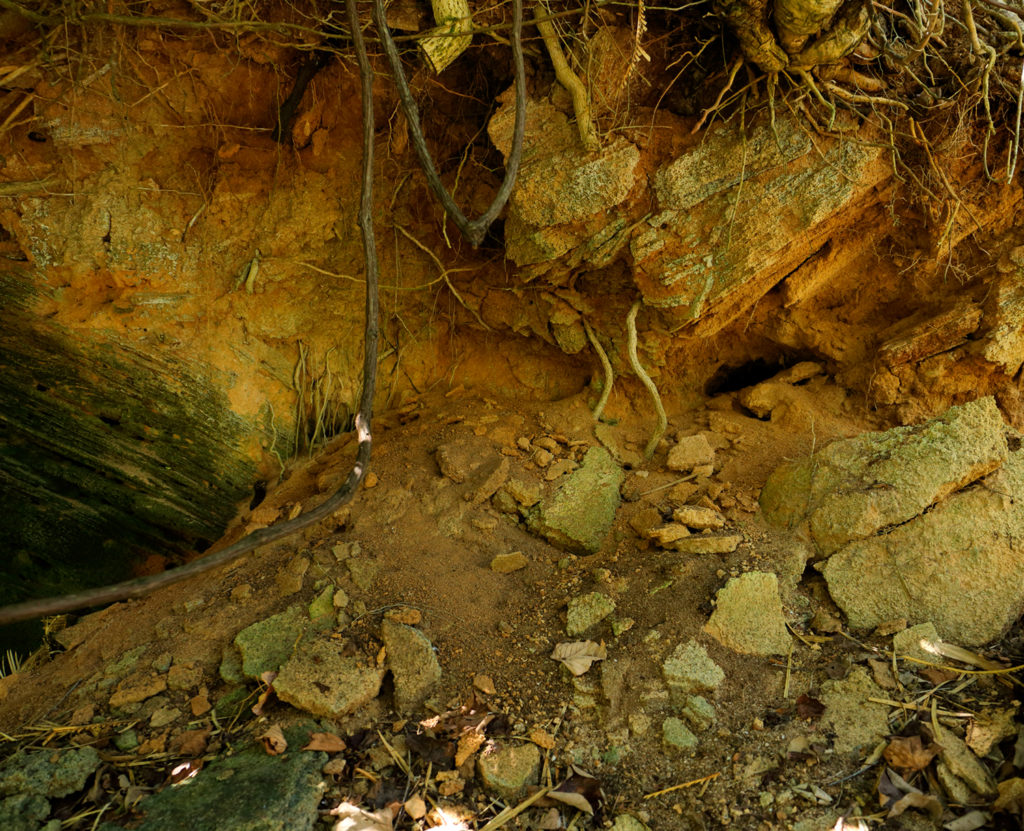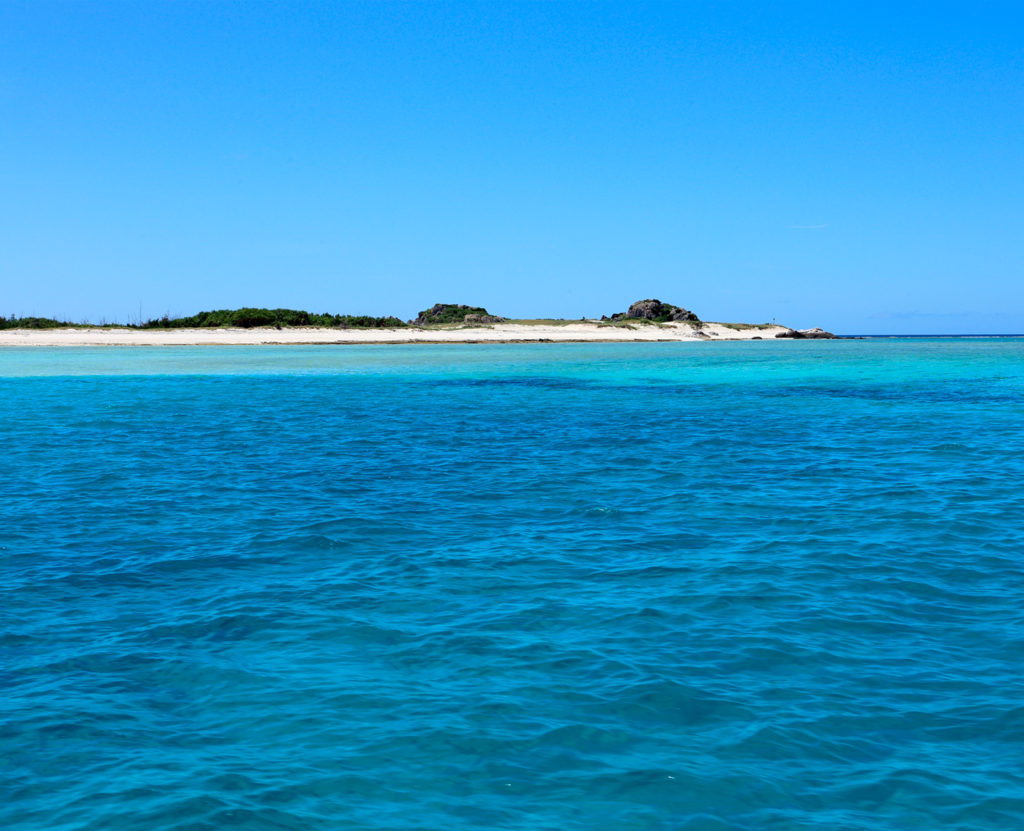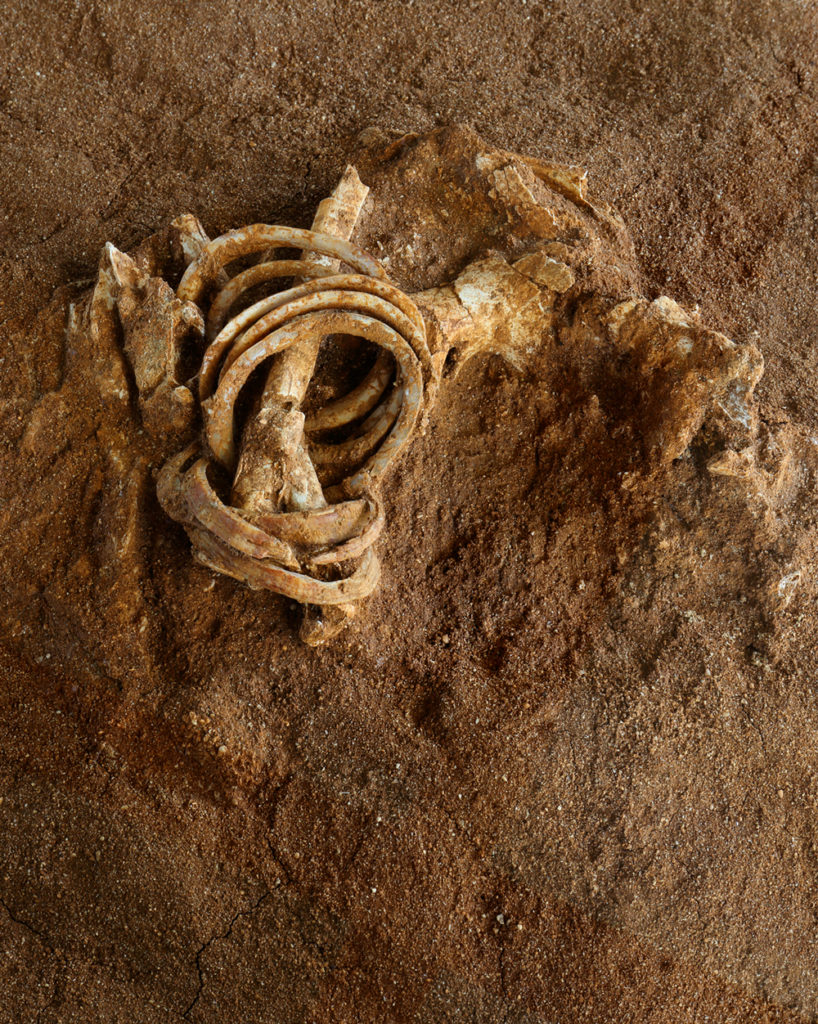A Link in the Shell Route
The plane began its descent to Okinawa Island, passing through a layer of white clouds and bringing into view the blue sea below. I peered out the round window, and Iheya Island was already right there. Quickly, I fetched my camera from the bag and started shooting. Next to Iheya appeared Izena Island, and between them peeked out the modest sandy beach of the slender Gushikawa Island. After the plane landed in Naha, I made my way back north by bus toward the islands I had just seen from the sky. Past Nago City and farther up at Unten Port, I boarded a ferry. This was my second trip to Izena Island.

On the second day of this stay, I visited the Izena Village Fureai Folk Museum to see the human skeletal remains from Gushikawa Island, which has been uninhabited since 1965. The bones were excavated along with the surrounding soil, because human remains are customarily stored exactly as they were found. This find comprised the bones of a male’s right forearm dated to between 2,500 and 3,500 years ago. Whether or not this is considered the Jomon period in Okinawa is up for debate even among researchers. Some materials I have studied say Okinawan time periods are not divided into Jomon (ca. 11000–500 BC), Yayoi (ca. 500 BC–AD 300), and so on as they are in mainland Japan, but the time corresponding to the Japanse Paleolithic (Before 11000 BC) onward and after the discovery of pottery is called the Okinawa Kaizuka, or shell midden, period. Saying a silent prayer, I scanned the contents of the glass case. The bones that have long rested in the earth were wearing a stack of eight shell bracelets.
According to the excavation report published in 1979, each of the shell bracelets on the arm had been very carefully processed, the surfaces either polished or selected for having a polished appearance to begin with, and featuring the distinct radiating ornamentation and regular pink stripes of the natural shell. Gazing at the bracelets, with their soft luster in spite of their 2,500 plus years of age, I remembered a story I once heard from an archaeologist. Bones buried underground seldom remain as is, because their organic components decompose quickly in acid soil. The calcium carbonate content of shells, however, neutralizes the soil and effectively protects the bones. This is why shell middens often contain precious relics for archaeologists to find.

That may or may not be what happened here, but the fact that eight shell bracelets and the bones of a man’s arm survived together is a miracle beyond question. I couldn’t help admiring the beautiful decoration and imagining not only the one male wearer but all the people of his time who lived with the seashells. They must have led a lifestyle of not only hunting and gathering but also—or rather, primarily—fishing, and traveled the waters freely at will.
They must also have been a link in the Shell Route. The Rukyu Islands (aka the Nansei Islands) were connected all the way up with Hokkaido via a network of trade routes that ran through Kyushu, the Seto Inland Sea, and the Sea of Japan. A full picture of this Shell Route has not yet emerged, but it is updated and extended each time a shell decoration is unearthed somewhere in Japan, and the shells are traced back to the Rukyu Islands.

Standing on the tiny southern island, those of us alive today tend to feel as if we’ve arrived at the end of the world. We need to appreciate the view that unfolds beyond. On the day before I left Izena, I asked a fisherman to help me reach the shores of Gushikawa Island. Though the vegetation was so heavy that I had a hard time walking, the island offered a sweeping view of Iheya, Izena, Okinoerabu, Yoron, and northern Okinawa islands. If you happen to have a map at hand, open it up and take a look. This tiny island lies on the seam between the Amami Islands and the Okinawa Islands. Do you see? This was an early relay point of cultural exchange.
<PAPERSKY no.46(2014)>

Jomon Fieldwork | Nao Tsuda × Lucas B.B. Interview
A conversation between ‘Jomon Fieldwork’ Photographer and writer Nao Tsuda and Papersky’s Editor-in-chief Lucas B.B. The two discuss the ways Jomon culture continues to play an important role in modern day Japan. The video was filmed at Papersky’s office in Shibuya in conjunction with Tsuda’s exhibition “Eyes of the Lake and Mother Mountain Plate” held at the Yatsugatake Museum in Nagano.
Nao Tsuda | Photographer
Through his world travels he has been pointing his lens both into the ancient past and towards the future to translate the story of people and their natural world.
tsudanao.com











